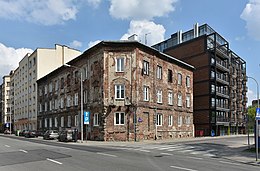
Back Gentrifikasie AF استطباق Arabic Xentrificación AST Джентрификация Bulgarian Džentrifikacija BS Gentrificació Catalan Gentrifikace Czech Boneddigeiddio CY Gentrificering Danish Gentrifizierung German



Gentrification is the process of changing the character of a neighborhood through the influx of more affluent residents (the "gentry") and investment.[1][2] There is no agreed-upon definition of gentrification. In public discourse, it has been used to describe a wide array of phenomena, usually in a pejorative connotation.[3]
Gentrification is a common and controversial topic in urban politics and planning. Gentrification often increases the economic value of a neighborhood, but can be controversial due to changing demographic composition and potential displacement of incumbent residents.[1] Gentrification is more likely when there is an undersupply of housing and rising home values in a metropolitan area.[4]
The gentrification process is typically the result of increasing attraction to an area by people with higher incomes spilling over from neighboring cities, towns, or neighborhoods. Further steps are increased investments in a community and the related infrastructure by real estate development businesses, local government, or community activists and resulting economic development, increased attraction of business, and lower crime rates.
- ^ a b Finio, Nicholas (2022). "Measurement and Definition of Gentrification in Urban Studies and Planning". Journal of Planning Literature. 37 (2): 249–264. doi:10.1177/08854122211051603. ISSN 0885-4122.
- ^ "Gentrification". Dictionary.com.Lees, Slater & Wyly 2010[page needed] define gentrification as "the transformation of a working-class or vacant area of the central city to a middle class residential and/or commercial use".
- ^ Demsas, Jerusalem (5 September 2021). "What we talk about when we talk about gentrification". Vox.
- ^ Murphy, Daniel (2024). "Housing cycles and gentrification". Journal of Monetary Economics. doi:10.1016/j.jmoneco.2024.01.003. ISSN 0304-3932.